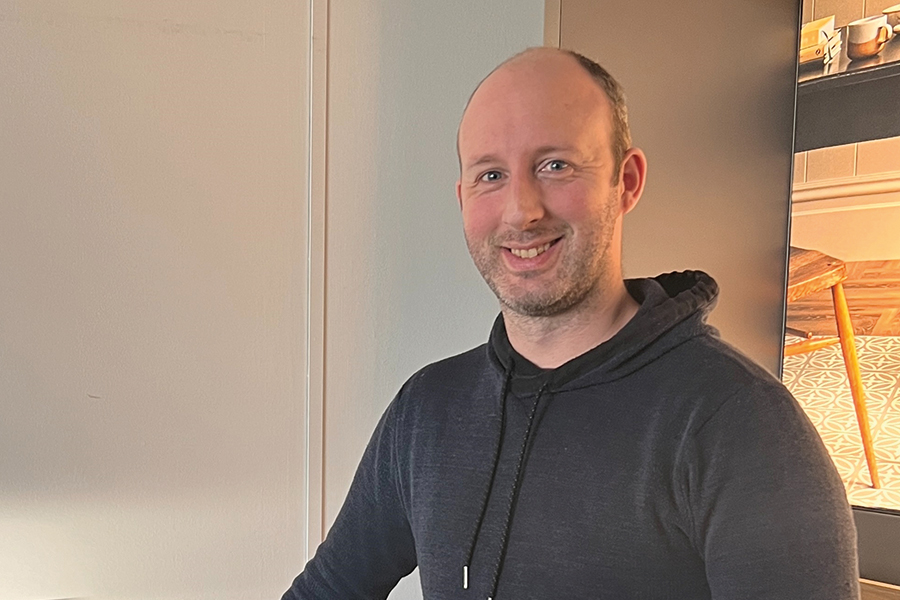Rob Mitchell provides information on LVT acclimatisation.
MOST of us are familiar with the idea that LVT needs to be acclimatised before it’s fitted, but exactly what this means and why it’s necessary is a regular source of debate and misunderstanding. In this article we explain why good acclimatisation and temperature regulation is the cornerstone of any successful LVT installation, and exactly what the process entails.
The Basics
Acclimatisation is primarily designed to prevent movements in the LVT prior to it being securely fixed to the floor. That’s because any movement in the tile/plank once it’s laid into the adhesive has the potential to disrupt the installation process. There are specific forces that can cause these movements, and it’s understanding how these forces operate that’s key to understanding the need to acclimatise LVT.
We’re taught early on in school that things expand and contract with changes in temperature, and LVT is no different – and being flexible means it’s even more affected by temperature, or more accurately, changes in temperature than other more rigid products. So, managing temperature is one of the main goals of acclimatisation.
The Beginning of the Journey
While your LVT supplier will work hard to ensure your LVT arrives in perfect condition, like most items shipped through distribution networks, the exact conditions of its journey from the factory to site, via warehouses and numerous vehicles, will be unknown.
With this in mind, on arrival it’s important to allow for the possibility that some of the planks could well have picked up small, temporary distortions along the way.
Arrival on site marks the start of the acclimatisation process. At this point any transit packaging is removed and the unopened LVT cartons placed flat in small piles around the room where it’s to be fitted. It remains in the room environment (at the stable room temperature set by the manufacturer) for a further 48 hours to allow for the material to adjust to the room conditions and for any of the small transportation and handling distortions to the tile to disappear.
It’s important the packs remain unopened during this 48-hour phase. Firstly, because it protects the contents from damage, but also because if the planks are taken out and laid side-by-side upon the floor on arrival, it’s possible some of the planks wouldn’t fit squarely along their edges, which in turn could present as manufacturing defects to the untrained eye. The 48-hour acclimatisation is precisely there to allow any small deviations through mishandling etc, to settle and the product be flat ready for installation.
It’s appreciated by all us manufacturers that this waiting period can be frustrating for the installer. After all, looking at an apparently motionless carton of LVT for two days while being assured there’s movement taking place inside can be a leap of faith, with the potential creating emotional tensions for customers and fitters alike. But the urge to get fitting before the LVT has fully settled should be resisted.
Why is preventing movement during fitting so important?
When a tile/plank is first laid into wet adhesive, the bond will naturally be at its weakest. This is initially useful as it enables the tiles to be pulled together to create a snug fit, but it also means the tiles at that point are only partially secured to the floor. The bond will strengthen slowly over the following 72 hours until the adhesive has fully cured, but throughout this time, and particularly so in the early stages, the tiles will still be vulnerable to swift or large temperature changes, which risks tiles/planks lifting out of the adhesive and causing permanent damage to the material, not to mention customer relationships.
So, it’s important to keep the room conditions stable, in line with the advice from the manufacturer, throughout the initial 48 hours of acclimatisation, through the fitting time and for the following 72 hours after fitting. This may involve several measures including the use of shading and ventilating in summer months, and the use of space heaters to regulate night-time drop in temperatures in the winter.
With underfloor heating it’s especially important to follow your LVT manufacturer’s guidance. After fitting, it should always be restarted with caution to prevent any large or rapid increases causing additional stress to the LVT.
By taking time to understand how the influence of temperature and mishandling during transportation can materially affect LVT, therefore the reasons for acclimatisation begin to sound like common sense rather than a burden to be endured. The results will show for themselves in more well finished floors and more happy customers.
Top Tips
- Always plan your project so the correct environmental conditions can be maintained throughout the five-to-six day process.
- Consider all potential influences on environmental conditions e.g. the time of year, weather forecast, building conditions, and put measures into place so potential peaks and troughs of temperature are avoided.
- Be extra aware of the manufacturer’s acclimatisation and temperature control guidance during peak summer months and during cold winter snaps where quick and larger temperature fluctuations are more likely.
- Although this risk of tile movement reduces as the adhesive bond slowly cures, it’s wise to keep the room environment stable throughout the 72-hour period after fitting.
- Construction sites can be cold and draughty. Fit the floor only once the building is water-tight, any new concrete has fully dried and when room conditions can be kept stable. Ideally LVT fitting should be the last trade on site.
www.harveymaria.com
Rob Mitchell is technical support manager at Harvey Maria


